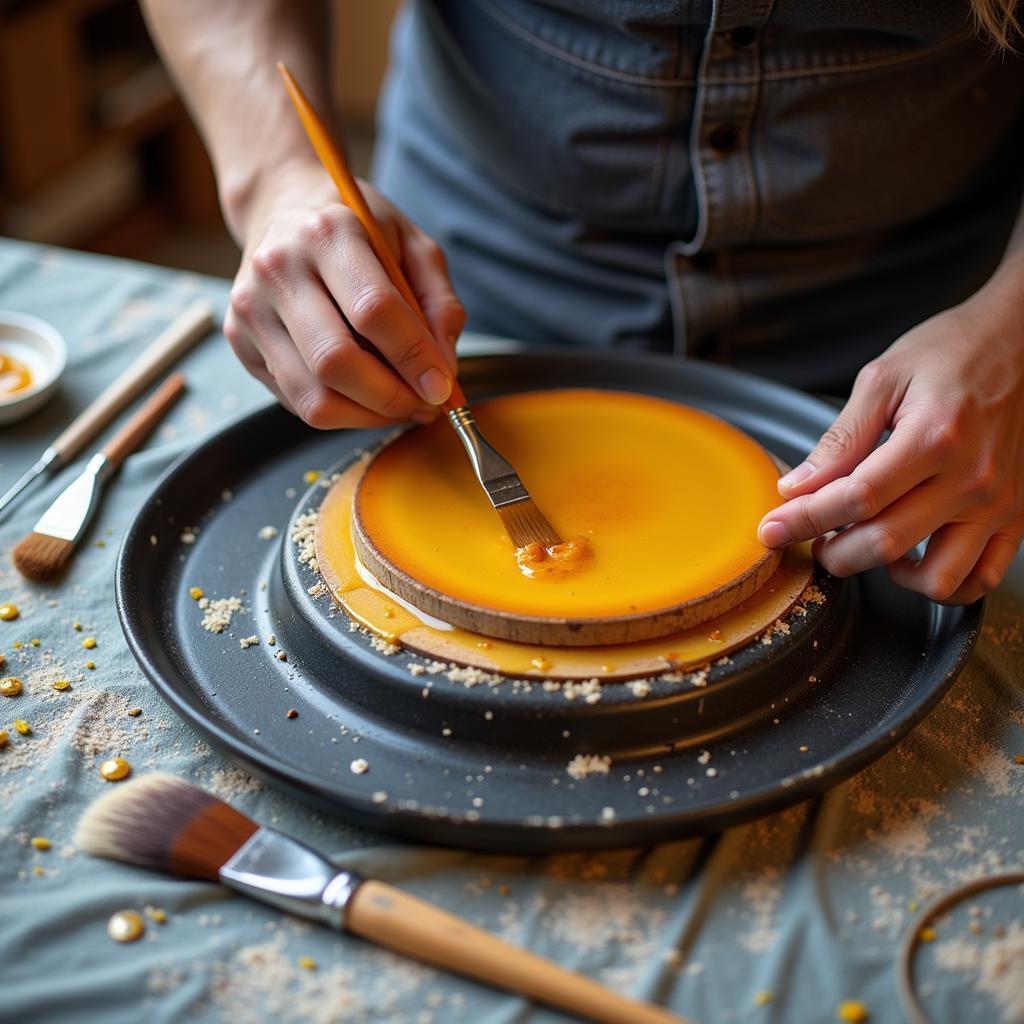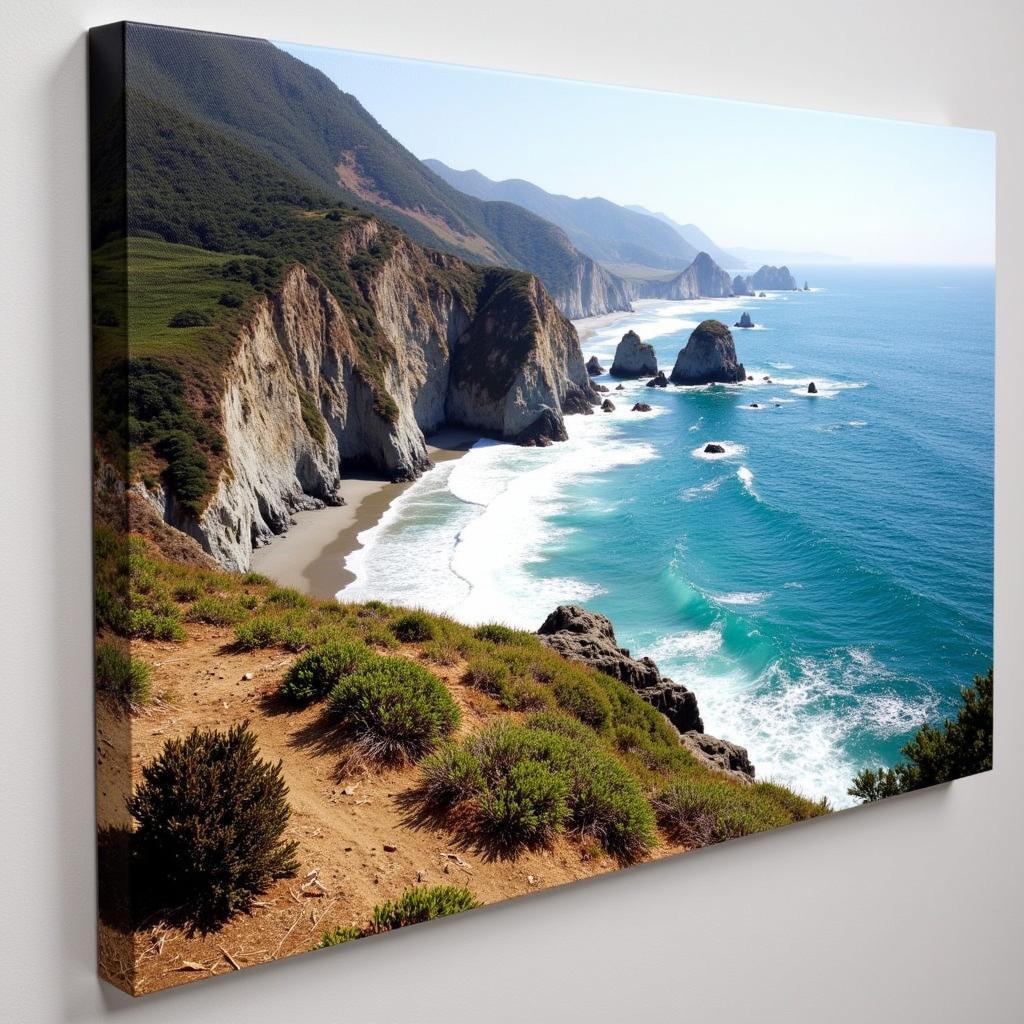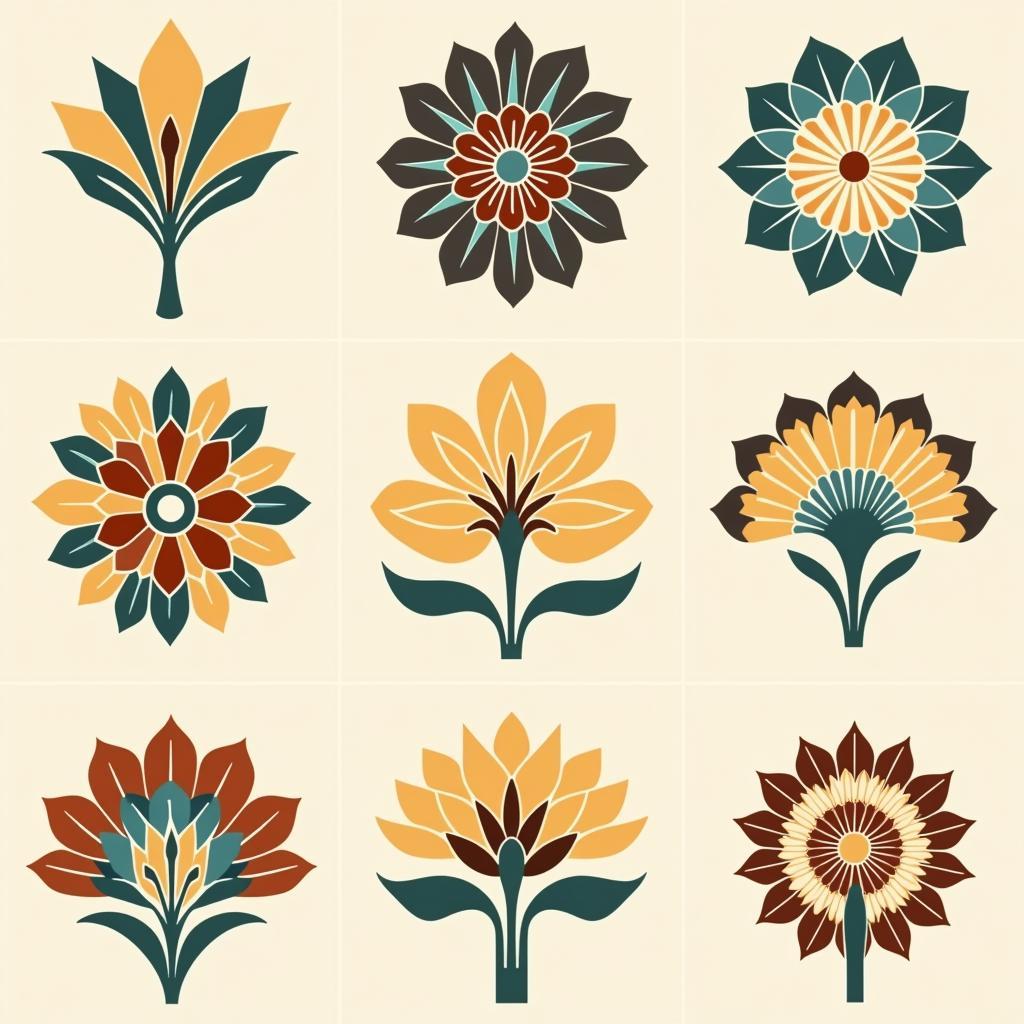Mastering Encaustic Art with a Hot Plate
Encaustic art, an ancient technique using molten beeswax and pigment, is experiencing a modern renaissance thanks to the Encaustic Art Hot Plate. This accessible tool allows artists of all levels to explore the vibrant and textural world of wax painting. From understanding the basics to advanced techniques, this guide will cover everything you need to know about using an encaustic art hot plate.
What is an Encaustic Art Hot Plate?
An encaustic art hot plate is a temperature-controlled surface specifically designed for melting and maintaining the optimal temperature for beeswax and other encaustic mediums. Unlike traditional methods that use a heat gun or open flame, a hot plate provides a safe and consistent heat source, allowing for greater control and precision in your work. It’s an indispensable tool for anyone serious about exploring the possibilities of encaustic art. This controlled environment allows for intricate details and layering effects that would be difficult to achieve with other methods.
 Artist Using an Encaustic Art Hot Plate
Artist Using an Encaustic Art Hot Plate
Choosing the Right Encaustic Art Hot Plate
Selecting the appropriate hot plate is crucial for a successful encaustic journey. Consider the size of your workspace and the scale of your projects. Smaller hot plates are perfect for beginners and smaller pieces, while larger surfaces accommodate larger artwork and more complex techniques. Look for features like adjustable temperature controls, a non-stick surface, and even heat distribution.
 Various Sizes of Encaustic Hot Plates Available
Various Sizes of Encaustic Hot Plates Available
Essential Techniques for Using an Encaustic Art Hot Plate
Using an encaustic art hot plate requires a bit of practice, but the results are well worth the effort. Start by melting your chosen waxes on the hot plate, keeping a close eye on the temperature. Use dedicated brushes and tools for applying the molten wax to your chosen substrate. Experiment with layering, textures, and incorporating other materials like pigments, shellac, and oil paint sticks.
Layering and Fusing
Layering is the heart of encaustic painting. Apply thin layers of wax, fusing each layer with the previous one using the heat from the hot plate or a heat gun. This creates depth, texture, and luminosity unique to encaustic art. Don’t be afraid to experiment with different colors and opacities.
Incorporating Pigments and Other Materials
Adding pigments to your molten wax opens up a world of color possibilities. You can also embed other materials like paper, fabric, and found objects into the wax, adding another dimension to your artwork.
Creating Textures and Effects
Explore different tools and techniques for creating unique textures. Metal tools, brushes, and even household items can be used to carve, scrape, and manipulate the wax surface.
Safety Precautions When Working with an Encaustic Art Hot Plate
Always prioritize safety when working with a hot plate. Ensure your workspace is well-ventilated and wear appropriate safety gear, including heat-resistant gloves and a respirator mask. Never leave your hot plate unattended and keep it away from flammable materials. Proper ventilation is crucial to prevent the inhalation of fumes.
Conclusion
The encaustic art hot plate has revolutionized the way artists approach this ancient medium. By providing a safe, controlled, and consistent heat source, it opens up endless creative possibilities. From beginners to experienced artists, this versatile tool empowers you to explore the captivating world of encaustic art and create truly unique and stunning works of art. So, grab your encaustic art hot plate and embark on your creative journey!
FAQ
- What temperature should I set my encaustic art hot plate to? Generally, a temperature between 200-225°F (93-107°C) is ideal for melting most encaustic mediums.
- What surfaces can I use for encaustic painting? Wood panels are a popular choice, but you can also use canvas, paper, and even metal.
- Can I use any type of wax on an encaustic hot plate? It’s best to use waxes specifically designed for encaustic painting.
- How do I clean my encaustic art hot plate? Allow the hot plate to cool completely and then scrape off any excess wax with a non-abrasive tool.
- What are some common mistakes to avoid when using an encaustic art hot plate? Overheating the wax, not fusing layers properly, and inadequate ventilation are common pitfalls.
- Where can I find encaustic art supplies? Art supply stores, online retailers, and specialty encaustic shops offer a wide range of supplies.
- Are there online resources or communities for encaustic artists? Yes, numerous online forums, groups, and websites provide valuable information, tutorials, and community support.
Have other questions? Need support? Contact us! Phone: 02462573573, Email: [email protected] Or visit us at: Savico Megamall, 7-9 Đ. Nguyễn Văn Linh, Gia Thụy, Long Biên, Hà Nội 10000, Việt Nam. We have a 24/7 customer service team.


